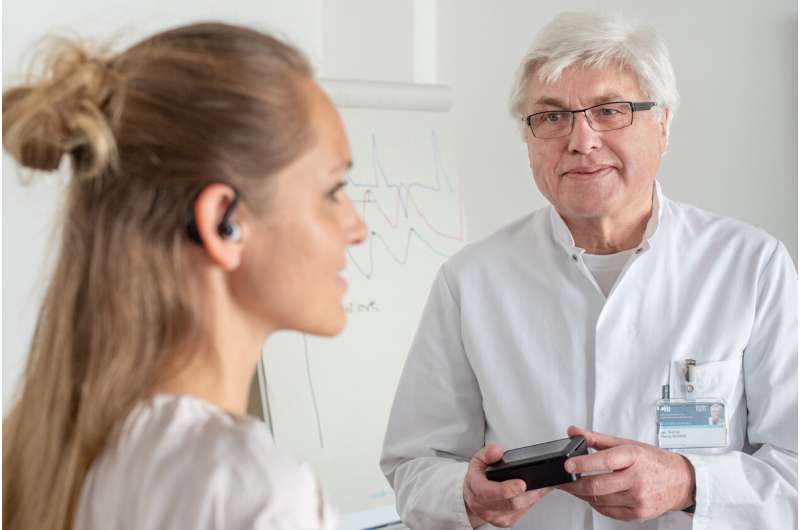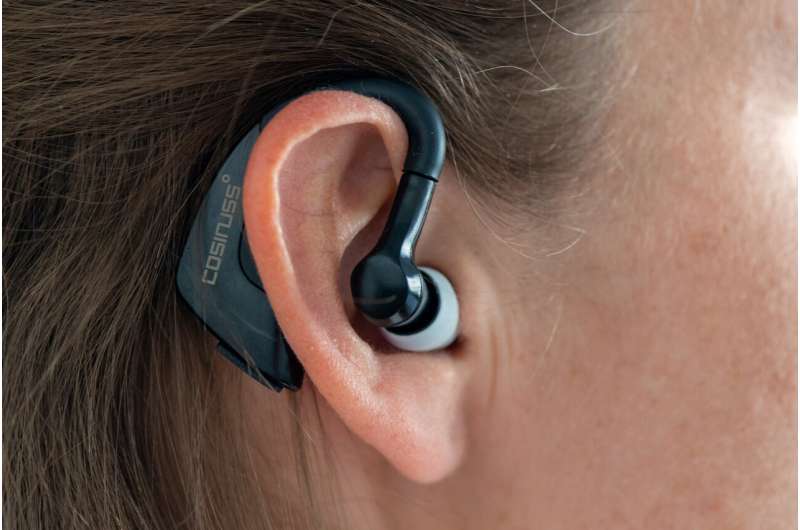Ear sensor enables safe telemedical care for COVID-19 risk patients

Using telemedicine, COVID-19 patients can be cared for safely at home—from initial home isolation to recovery or, in case problems arise, admission to hospital. A team from the Technical University of Munich (TUM) has now successfully demonstrated this in a study involving 150 patients with risk factors for a severe progression of the disease.
COVID-19 patients are required to go into home isolation. But this can be dangerous for high-risk patients if they develop a severe progression during isolation. In this case, timely admission to the hospital for treatment can be critical for survival.
Unfortunately, many COVID-19 patients do not immediately notice when their condition starts to deteriorate. The alternative of playing safe by admitting all at-risk patients immediately upon diagnosis would overburden the clinics.
Small effort—large gain in safety
During the recent Corona waves, Georg Schmidt and his team provided telemedical care to more than 150 patients with risk factors for a severe progression of the disease using an ear sensor that is easily worn behind the ear like a hearing aid.
The sensor recorded all important values such as body temperature, heart rate, respiration rate, and oxygen saturation in 15-minute intervals and transmitted the data to the telemedicine center at TUM's university hospital Klinikum rechts der Isar. There, the team continuously monitored all incoming data. In addition, each participant was called at least once a day to inquire about his or her condition.
Whenever the team noticed a deterioration in the readings, they called the patient. A physician then took a decision on whether hospitalization was indicated. With minimal effort, the team achieved a quality of monitoring quite comparable to that at a hospital.

Great patient satisfaction
Around one in eight participants had to be admitted during the study. Interestingly, most of these patients later stated that they did not themselves realize the degree of deterioration in their condition.
"To our knowledge, this is the first study worldwide to continuously monitor patients in home isolation remotely and to prompt immediate hospitalization in the event of critical health deterioration," said Prof. Georg Schmidt, head of the Biosignal Processing Group at the Klinikum rechts der Isar.
The study illustrates that COVID-19 risk patients can be monitored effectively using telemedicine, potentially saving valuable resources in future waves of infection. Patients were also very satisfied and felt significantly safer thanks to the continuous monitoring.
The study was published in PLOS ONE.
More information: David Wurzer et al, Remote monitoring of COVID-19 positive high-risk patients in domestic isolation: A feasibility study, PLOS ONE (2021). DOI: 10.1371/journal.pone.0257095


















